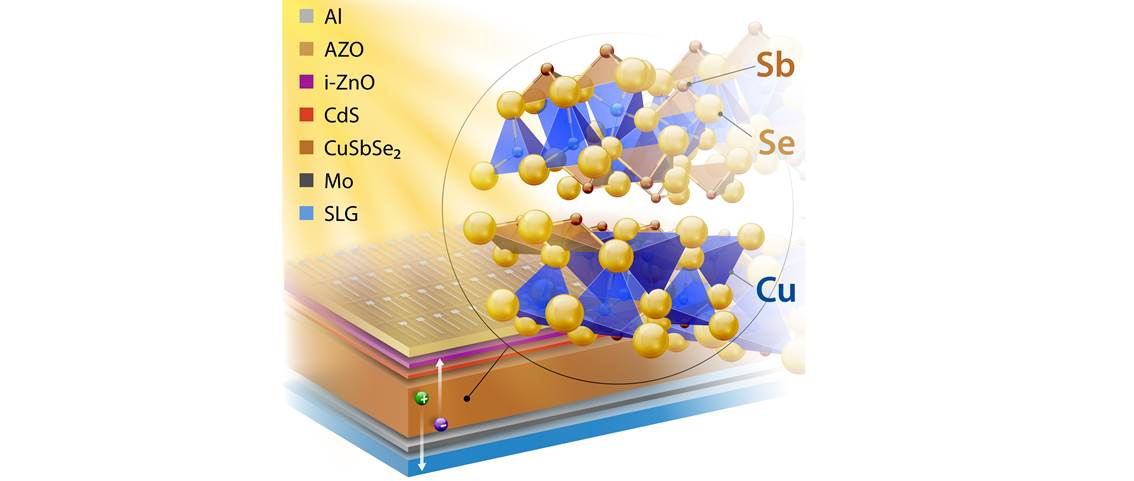Converting solar energy into electrical energy using photovoltaic solar cells requires thin semiconductor materials that absorb sunlight and transport electrons to the contacts. Existing thin-film solar cells are made from absorber materials that are very good at transporting electrons because of their symmetric three-dimensional (3-D) crystal structures, such as Cu(In,Ga)Se2 or CdTe. Low-dimensional (2-D and 1-D) materials such as MoSe2 or Sb2S3 often have stronger optical absorption, but at the expense of weaker electron transport. Thus, a better scientific understanding of the trade-offs between optical absorption and electron transport is needed to improve the solar cell performance of low-dimensional materials.
A team led by National Renewable Energy Laboratory (NREL, USA) has studied the trade-offs in thin-film solar cells with a layered photovoltaic absorber called “chalcostibite” (CuSbSe2 chemical formula). The researchers found that for this 2-D-like material with strong optical absorption the electron transport is enhanced by drift in the built-in electric field, leading to improved electrical current that can be collected from the solar cells. However, the same mechanism reduces the solar cell voltage, leading to the same power (current times voltage) and similar energy conversion efficiency of around 4–5% with these novel chalcostibite absorbers. More importantly, the results may help researchers better understand the operation of both existing 3D and emerging 2D/1D solar cell absorbers.
The NREL scientists arrived at these conclusions using “combinatorial” research methods that allow much faster experimentation compared to traditional experimentation. “The combinatorial experiments are similar to parallel computing, in that multiple solar cells are studied at once,” says NREL’s Dr. Andriy Zakutayev, a principal investigator of this U.S. Department of Energy-funded project. First, multiple thin-film photovoltaic devices are synthesized in vacuum chambers; then, these devices are measured automatically using instruments controlled by computers; and finally, the results are analyzed using special software algorithms. The combinatorial experiments of the chalcostibite solar cells were supported by state-of-the-art quantum mechanical calculations at NREL and advanced spectroscopic measurements at Helmholtz-Zentrum Berlin (HZB, Germany).

















